Small Blue Glaze and Blue-and-White Brush Washer from the Qing Dynasty | A Scholar’s Elegant Utensil with the Auspicious Pattern of “Hundreds of Sons and Thousands of Grandchildren”
[Overview of the Collection]
This piece is a classic scholar’s utensil from the porcelain-making craftsmanship of the Qing Dynasty – a small blue glaze and blue-and-white brush washer. The utensil has a small and round shape, covered entirely with a deep blue glaze. The glaze surface is smooth, shiny, and has a stable texture. Inside the washer, delicate patterns are painted in blue and white. In the center, there is a pattern of intertwined lotus vines, and around it, the four-character auspicious phrase “Hundreds of Sons and Thousands of Grandchildren” is inscribed. It combines both practical functions and cultural implications. It was an elegant utensil for grinding and holding extra ink in the study rooms of Qing Dynasty scholars. It is also a precious carrier of traditional Eastern art and auspicious culture.
[Craftsmanship Analysis]
1. Blue Glaze Application Technique
The outer wall uses the mature high-temperature blue glaze technique of the Qing Dynasty. The glaze formula is precise, and the glaze is evenly applied. After high-temperature firing, it presents a deep and stable indigo color. The glaze surface is smooth and tight, as delicate as jade. Under the light, a gentle pearly luster can be seen, demonstrating the exquisite craftsmanship of porcelain-making in both imperial and folk kilns of the Qing Dynasty.
2. Details of Blue-and-White Painting
The blue-and-white painting on the inner wall is skillfully executed, with smooth and powerful brushstrokes. The intertwined lotus vine pattern is connected by continuous branches. The flowers are plump, and the leaves are fully extended, with distinct layers in the pattern. The four characters “Hundreds of Sons and Thousands of Grandchildren” are written in regular script, with a proper and solemn font. The strokes reveal the elegance of a scholar’s calligraphy. The blue-and-white color is rich, bright, and stable, forming a sharp contrast with the white glaze background, combining both decorative and readability features.
[Design and Patterns]
-
Shape: The overall shape is like a round bowl, with a slightly converging mouth, a gentle arc on the belly, and a shallow and flat base. The shape is regular, and it has a comfortable grip, reflecting the aesthetic pursuit of “small but exquisite” in scholar’s utensils.
-
Glaze Color Contrast: The pure blue glaze on the outer wall and the blue-and-white and white glaze on the inner wall create a strong visual contrast. It is reserved on the outside and delicate on the inside, showing both grandeur and the hidden delicate patterns, embodying the traditional design philosophy of “simple on the outside and complex on the inside.”
-
Pattern Implications: The intertwined lotus vine pattern in the center is a classic Eastern auspicious pattern, symbolizing purity, good luck, and continuous growth. The four characters “Hundreds of Sons and Thousands of Grandchildren” directly express the good wishes for the prosperity of the family and the continuation of descendants. It is an auspicious theme highly respected by both the folk and scholars in the Qing Dynasty.
[Cultural and Collectible Value]
1. Carrier of Scholar’s Culture
The brush washer is an auxiliary utensil for the four treasures of the study (brush, ink, paper, and inkstone) in traditional Chinese culture. It is used for cleaning brushes and adjusting ink color, and it is an indispensable elegant utensil for scholars’ daily creation and writing. This piece reflects the “elegant charm of the study” in the life art of Qing Dynasty scholars and witnesses the spiritual world of traditional scholars.
2. Inheritance of Auspicious Culture
As an auspicious phrase that has been passed down in Chinese folk for thousands of years, “Hundreds of Sons and Thousands of Grandchildren” expresses the simple wish for family continuation and a large number of descendants. Combined with the auspicious meaning of the intertwined lotus vine pattern, this piece is not only a practical utensil but also a cultural symbol carrying Eastern ethical concepts and aesthetic tastes.
3. Collectible Potential of Qing Dynasty Porcelain
The Qing Dynasty was the heyday of China’s porcelain-making industry. Scholar’s porcelain, due to its delicate production and relatively small quantity in existence, has always been favored in the antique collection market. This piece is in good preservation condition, and its glaze color, blue-and-white, and patterns all have typical characteristics of the Qing Dynasty. It is a physical material for studying the scholar’s porcelain of folk kilns in the Qing Dynasty and an ideal choice for international collectors to collect Eastern antiques and curios.
[Usage and Maintenance Suggestions]
-
Suitable Scenarios: It is recommended to display it as a scholar’s collection in a study, a curio cabinet, or a cultural and artistic space to highlight the traditional Eastern aesthetic. It can also be used as an elegant utensil on a tea table to hold small items such as tea pets and incense burners.
-
Maintenance Precautions: Avoid severe collisions or sudden temperature changes. When cleaning, gently wipe it with a soft dry cloth. If there are slight stains, you can dip a small amount of water to wipe it, but avoid using chemical cleaners. For long-term display, avoid direct sunlight to maintain the stability of the glaze color and blue-and-white.
[Why Collect This Piece]
In the field of Eastern antique collection, scholar’s utensils are well – known for “showing the grand in the small.” They are not only manifestations of craftsmanship but also miniatures of Chinese scholars’ spirits and life philosophies. This Qing Dynasty blue glaze and blue-and-white brush washer shows the solemnity of imperial aesthetics with its deep blue glaze, conveys the warmth of the folk with the phrase “Hundreds of Sons and Thousands of Grandchildren,” and connects nature and humanity with the intertwined lotus vine pattern. It is an Eastern cultural envoy across time and space, adding a touch of scholarly fragrance and auspicious meaning to your collection.
✦ Age of the Collection: Qing Dynasty
✦ Material and Craftsmanship: Porcelain (Blue Glaze, Blue-and-White)
✦ Usage: Scholar’s Brush Washer / Collection Display
✦ Features: Lustrous Blue Glaze, Stable Blue-and-White, Auspicious Theme, Scholar’s Elegant Utensil
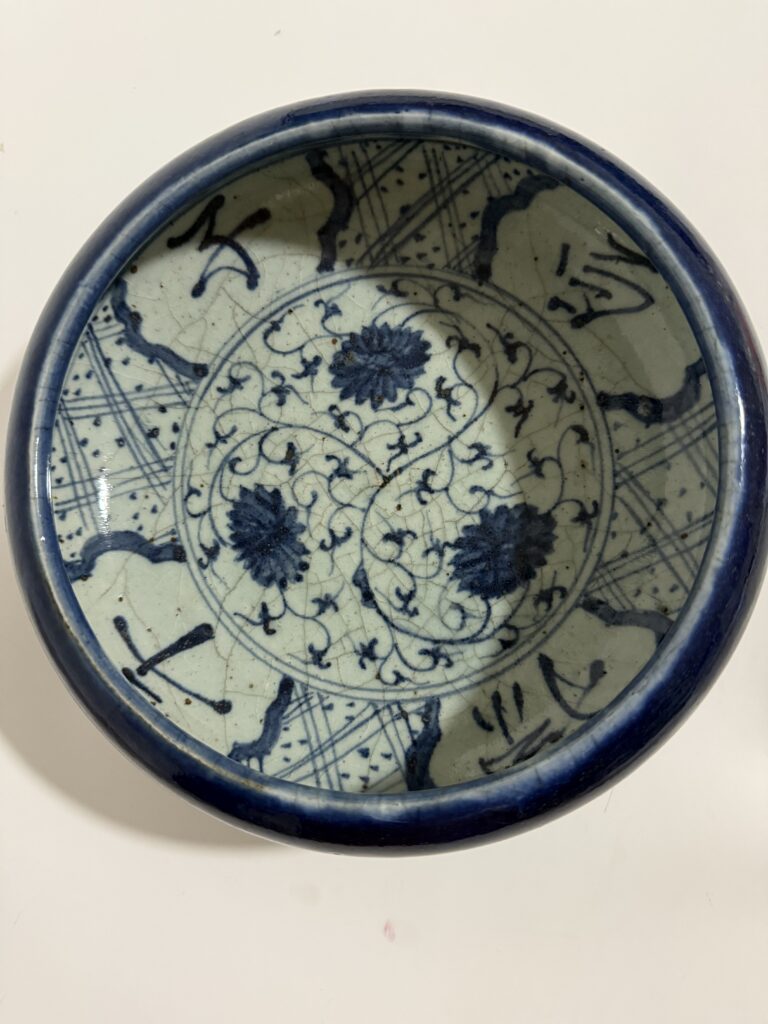
清代藍釉青花小筆洗|「百子千孫」吉祥紋飾文房雅器
【藏品概述】
本品為清代製瓷工藝之典範文房用具——藍釉青花小筆洗。器形小巧圓潤,通體施深邃藍釉,釉面瑩潤光亮,質感沉穩;內壁以青花繪製精緻紋飾,中心環繞纏枝蓮紋,周邊題寫「百子千孫」四字吉祥語,兼具實用功能與文化寓意,是清代文人書齋中研磨濡筆、承納餘墨之雅器,亦是東方傳統藝術與吉祥文化的珍貴載體。
【工藝解析】
1. 藍釉施釉技藝
外壁採用清代成熟的高溫藍釉工藝,釉料配方精準,施釉均勻,經高溫燒製後呈現深邃穩重的靛藍色澤,釉面緊密光滑,細膩如玉,光線下可見溫潤珠光,展現清代御窯與民窯制瓷技術的精湛水準。
2. 青花繪製細節
內壁青花繪製技法嫻熟,筆觸流暢有力。纏枝蓮紋以連綿不斷的枝蔓貫穿,花朵飽滿,葉片舒展,紋樣層次分明;「百子千孫」四字以楷書題寫,字體端正莊重,筆畫間透出文人書寫的雅韻,青花发色濃艷沉穩,與白釉地形成鮮明對比,兼具裝飾性與識讀性。
【設計與紋飾】
-
器形:整體呈圓缽狀,口沿微斂,腹身弧線柔和,底足淺平,器型規整,握感適宜,體現文房用具「小而精」的審美追求。
-
釉色對比:外壁純粹藍釉與內壁青花白釉形成強烈視覺反差,外斂內秀,既顯端莊大氣,又蘊藏細膩紋飾,展現「外簡內繁」的傳統設計哲學。
-
紋飾寓意:中心纏枝蓮紋為東方經典吉祥紋樣,象徵潔淨、吉祥與生生不息;「百子千孫」四字則直抒對家族興旺、子孫綿延的美好祝願,是清代民間與文人共同推崇的吉祥題材。
【文化與收藏價值】
1. 文房文化載體
筆洗為中國傳統文房四寶(筆、墨、紙、硯)之輔助用具,用於清洗毛筆、調節墨色,是文人日常創作與書寫不可或缺的雅器。本品體現了清代文人「書齋雅趣」的生活藝術,見證了傳統讀書人的精神世界。
2. 吉祥文化傳承
「百子千孫」作為中國民間流傳千年的吉祥語,寄託了對家族延續、子孫眾多的樸素願望,結合纏枝蓮紋的吉祥寓意,使本品不僅是實用器物,更成為承載東方倫理觀念與審美情趣的文化符號。
3. 清代瓷器收藏潛力
清代為中國制瓷業發展的鼎盛時期,文房用瓷因製作精巧、存世量相對稀少,向來為古董收藏市場所青睞。本品保存狀態良好,釉色、青花與紋飾均具清代典型特徵,是研究清代民窯文房瓷的實物資料,亦為國際藏家收藏東方古董文玩之理想選擇。
【使用與保養建議】
-
適用場景:建議作為文房收藏品陳列於書房、博古架或文化藝術空間,彰顯東方傳統審美;亦可作為茶席雅器,承托茶寵、香具等小件器物。
-
保養須知:避免劇烈碰撞或溫度驟變;清潔時以柔軟乾布輕拭,若有輕微污漬可蘸少量清水擦拭,忌用化學清潔劑;長期陳列宜避免陽光直射,以保持釉色與青花的穩定性。
【為何收藏本品】
在東方古董收藏領域,文房用具向來以「小中見大」著稱——它們不僅是工藝美術的體現,更是中國文人精神與生活哲學的縮影。此件清代藍釉青花筆洗,以深邃藍釉展現皇家審美的莊嚴,以「百子千孫」傳遞民間的溫情,以纏枝蓮紋連接自然與人文,是跨越時空的東方文化使者,為您的收藏增添一抹濃郁的書卷香與吉祥意。
✦ 藏品年代:清代
✦ 材質工藝:瓷器(藍釉、青花)
✦ 用途:文房筆洗 / 收藏陳列
✦ 特點:藍釉瑩潤、青花穩重、吉祥題材、文房雅器

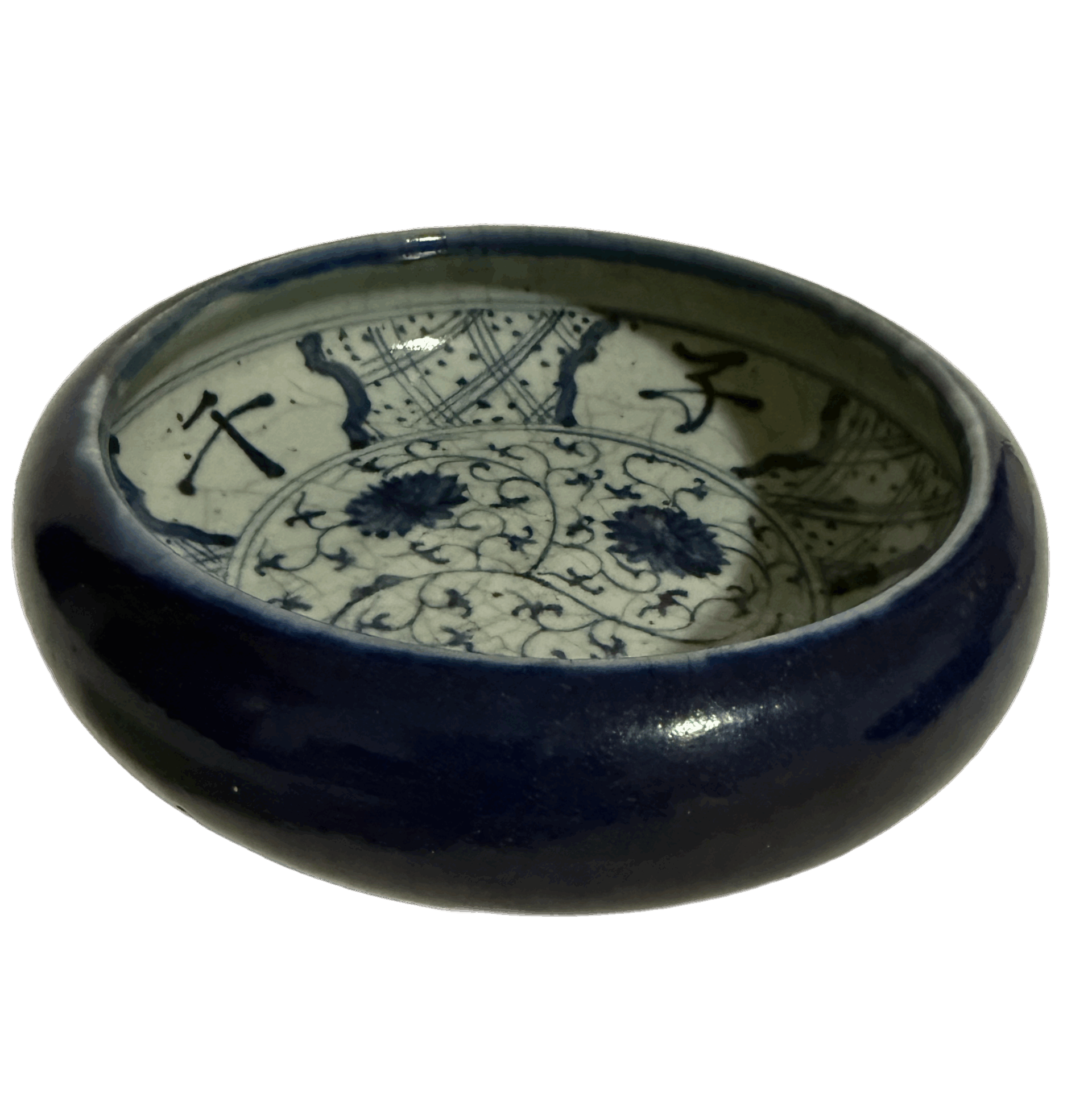
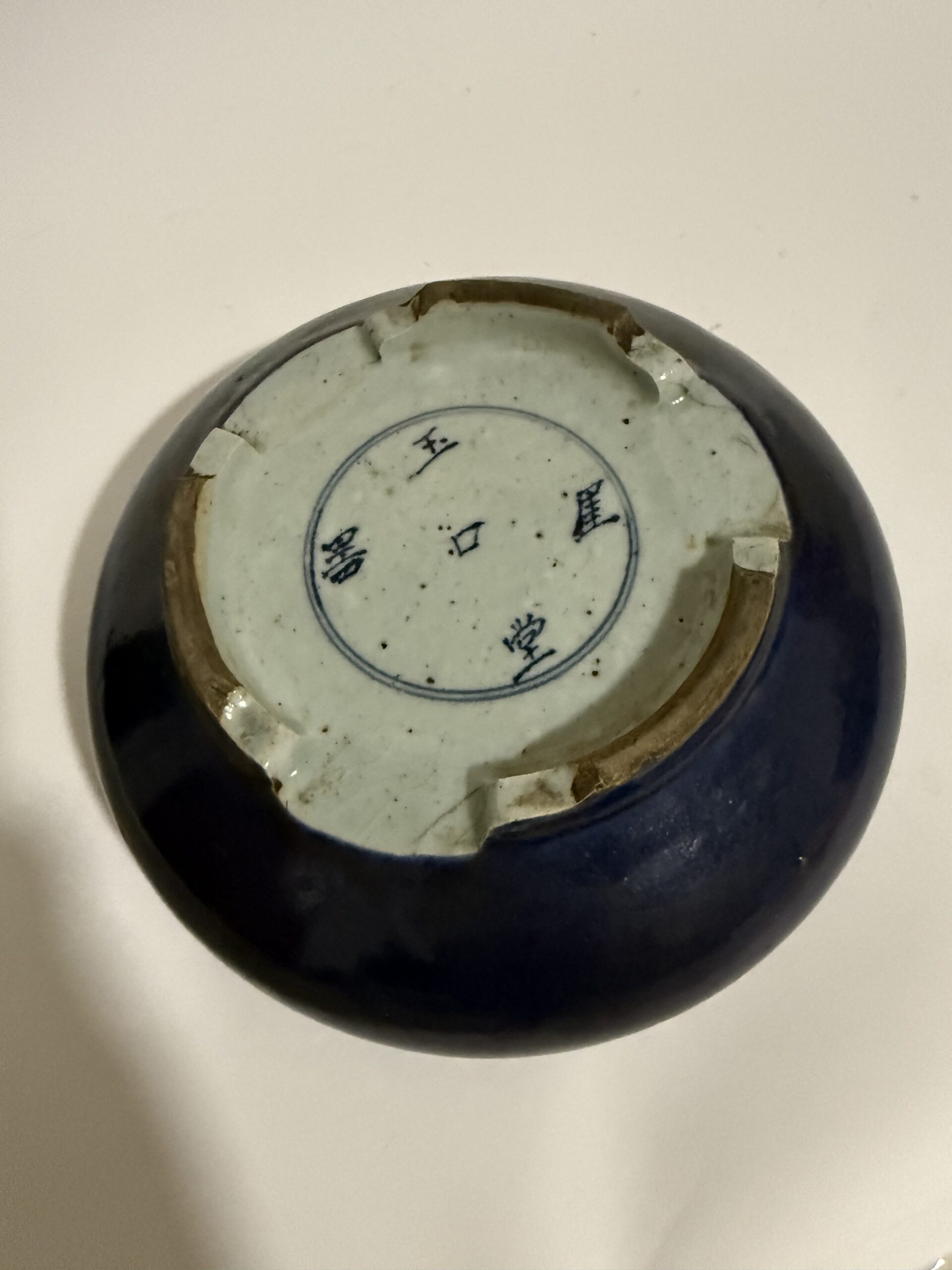
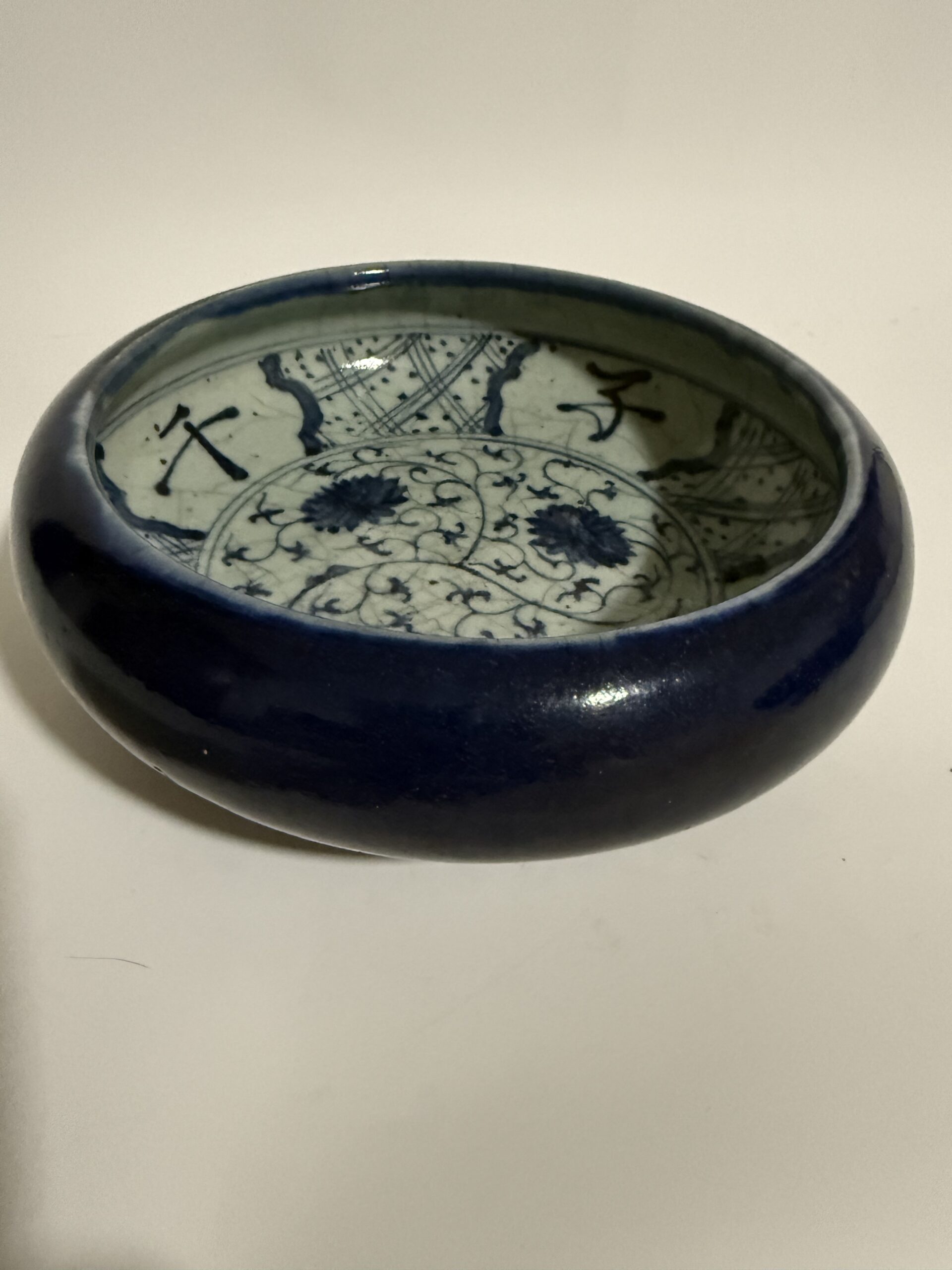
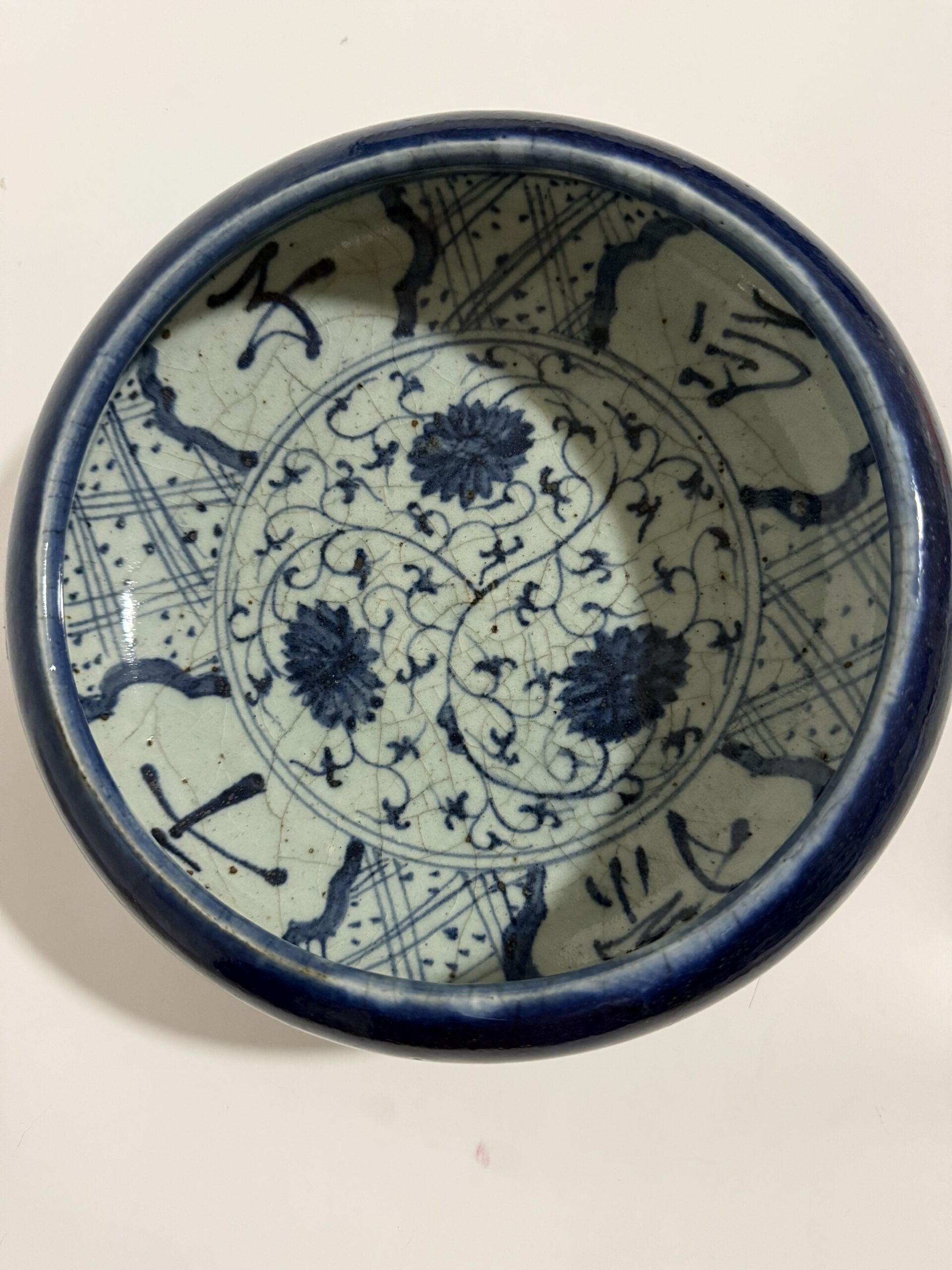

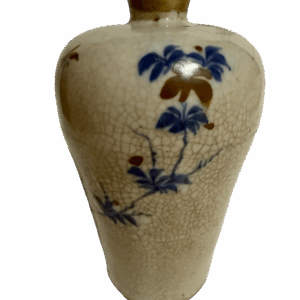
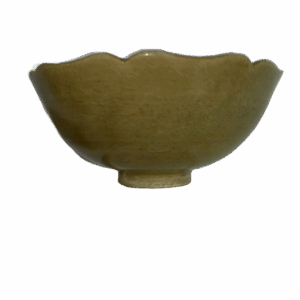
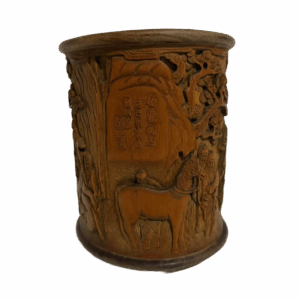
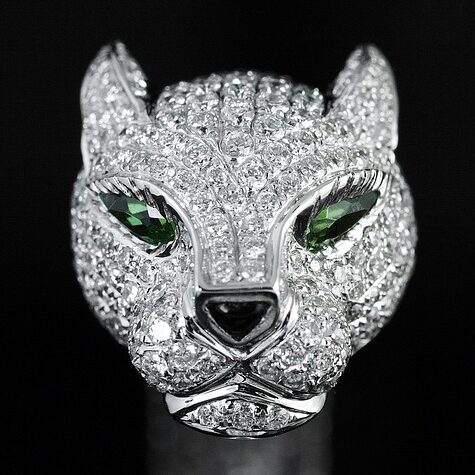
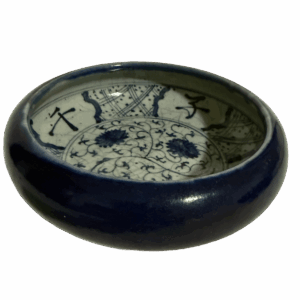
Reviews
There are no reviews yet.